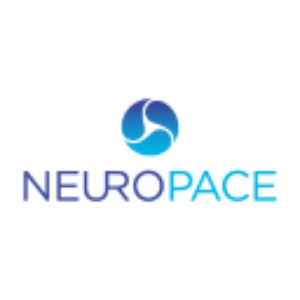NeuroPace Completes Enrollment in Feasibility Study of RNS System for Lennox-Gastaut Syndrome
Rhea-AI Summary
NeuroPace announced completion of enrollment and implant procedures in its feasibility IDE study of the RNS System for treating Lennox-Gastaut Syndrome (LGS), a severe childhood-onset epilepsy. The study, funded by a $9.3 million NIH grant, enrolled 20 patients aged 12 and older across six sites to evaluate the safety and effectiveness of brain-responsive stimulation for LGS treatment.
The study includes a one-year open label period followed by an 18-month long-term follow-up. LGS affects patients severely, with 85% continuing to have seizures into adulthood, 98% suffering from intellectual disability, and affected individuals being 12 times more likely to die prematurely than their peers.
Positive
- Secured $9.3 million NIH grant funding for the study
- Successfully completed enrollment of 20 patients for LGS treatment study
- Potential expansion of RNS System application to new patient population
Negative
- None.
News Market Reaction 1 Alert
On the day this news was published, NPCE declined 6.20%, reflecting a notable negative market reaction.
Data tracked by StockTitan Argus on the day of publication.
Enrollment and implant procedures completed in NIH funded feasibility study of LGS, a severe and disabling childhood-onset epilepsy
MOUNTAIN VIEW, Calif., Dec. 03, 2024 (GLOBE NEWSWIRE) -- NeuroPace, Inc. (Nasdaq: NPCE), a commercial-stage medical device company focused on transforming the lives of people living with epilepsy, today announced completion of enrollment and implant procedures in its feasibility investigational device exemption (IDE) study of the RNS® System for the treatment of Lennox-Gastaut Syndrome (LGS), a devastating form of childhood-onset epilepsy characterized by cognitive dysfunction and frequent generalized onset seizures that often lead to injury.
The IDE study uses the RNS System, which has demonstrated safety and effectiveness of brain-responsive stimulation for treating medically intractable focal onset seizures in people 18 and older, to evaluate whether brain-responsive neurostimulation can also be used to treat LGS.
NeuroPace received a
“We are pleased to announce the advancement of our LGS IDE study and look forward to the data and learnings it provides. The results from this study could support further research of RNS therapy to improve the treatment of people with LGS. We appreciate the dedicated efforts of the investigators, research teams, participants and their families,” said Martha Morrell, MD, Chief Medical Officer of NeuroPace. “After completing the one-year open label period, participants will transition to the long-term follow-up period, which will continue over the next 18 months.”
"LGS is a devastating, childhood-onset seizure disorder that leads to lifelong disability.
Disclaimer: Research reported in this press release was supported by the National Institutes of Health’s Brain Research Through Advancing Innovative Neurotechnologies (BRAIN) Initiative under award number UH3NS109557. The content is solely the responsibility of the authors and does not necessarily represent the official views of the National Institutes of Health.
About the RNS® System
The RNS® System, a paradigm-shifting treatment for drug-resistant focal epilepsy, is the only brain-responsive neuromodulation system approved by the FDA. The closed-loop technology delivers personalized, data-driven treatment targeted to the seizure source by continuously monitoring brain activity, recognizing a patient’s unique seizure pattern, and responding in real-time with imperceptible stimulation to prevent seizures. By recording ongoing EEG data, the RNS System provides physicians with a unique “window to the brain,” enabling them to remotely monitor their patients, gain insights based on brain activity, and use that information to optimize patient care. Long-term clinical studies demonstrate that the RNS System provides significant reduction in seizure frequency and enduring improvements in quality of life and cognition with no stimulation-related side effects. The RNS System is available at most comprehensive epilepsy centers in the United States and is widely covered by insurance. It is currently approved in the United States as an adjunctive therapy for patients 18 years of age and older with drug-resistant focal epilepsy. See full indication for use and important safety information at www.neuropace.com/safety/.
About NeuroPace, Inc.
Based in Mountain View, Calif., NeuroPace is a commercial-stage medical device company focused on transforming the lives of people living with epilepsy by reducing or eliminating the occurrence of debilitating seizures. Its novel and differentiated RNS System is the first and only commercially available, brain-responsive platform that delivers personalized, real-time treatment at the seizure source. This platform can drive a better standard of care for patients suffering from drug-resistant epilepsy and has the potential to offer a more personalized solution and improved outcomes to the large population of patients suffering from other brain disorders.
Forward Looking Statements
This press release may contain forward-looking statements made pursuant to the safe harbor provisions of the Private Securities Litigation Reform Act of 1995. These statements may be identified by words such as “aims,” “anticipates,” “believes,” “could,” “estimates,” “expects,” “forecasts,” “goal,” “intends,” “may,” “plans,” “possible,” “potential,” “seeks,” “will” and variations of these words or similar expressions that are intended to identify forward-looking statements, although not all forward-looking statements contain these words. Actual results or events could differ materially from the plans, intentions and expectations disclosed in these forward-looking statements as a result of various factors, including: risks related to regulatory compliance and expectations for regulatory approvals to expand the market for NeuroPace’s RNS System and other important factors. These and other risks and uncertainties include those described more fully in the section titled “Risk Factors” and “Management’s Discussion and Analysis of Financial Condition and Results of Operations” and elsewhere in NeuroPace’s public filings with the U.S. Securities and Exchange Commission (SEC), including its Quarterly Report on Form 10-Q for the quarter ended September 30, 2024, filed with the SEC on November 12, 2024, as well as any other reports that it may file with the SEC in the future. Forward-looking statements contained in this announcement are based on information available to NeuroPace as of the date hereof. NeuroPace undertakes no obligation to update such information except as required under applicable law. These forward-looking statements should not be relied upon as representing NeuroPace’s views as of any date subsequent to the date of this press release and should not be relied upon as a prediction of future events. In light of the foregoing, investors are urged not to rely on any forward-looking statement in reaching any conclusion or making any investment decision about any securities of NeuroPace.
Investor Contact:
Jeremy Feffer
Managing Director
LifeSci Advisors
jfeffer@lifesciadvisors.com









